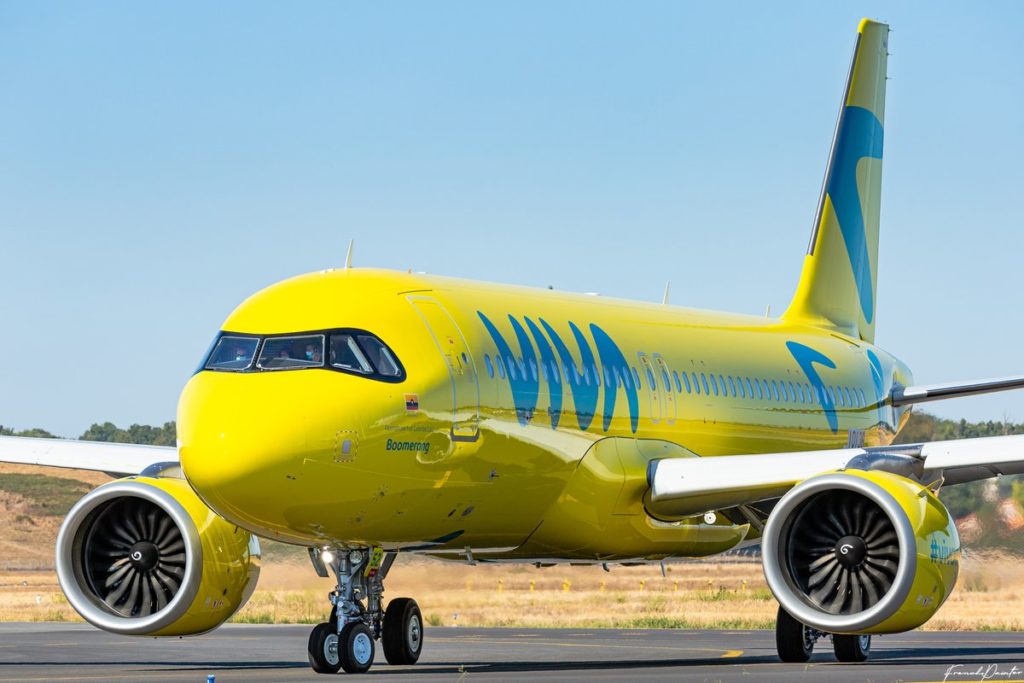LA ISLA DE PINOS, CUBA Y EN ELLA, LAS HUELLAS NORTEAMERICANAS DE UN SUEÑO PERDIDO PARA SIEMPRE
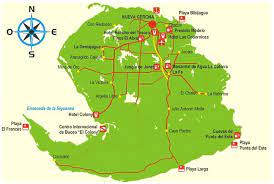
Desde su colonización española en 1494, la Isla de Pinos, ahora llamada Isla de la Juventud, siempre ha sido considerada parte integrante del territorio cubano, al igual que todas las islas, cayos e islotes que rodean a Cuba, pero cuando terminó el dominio español en 1898 con la ocupación militar estadounidense, surgieron interrogantes sobre su futuro estatus y Estados Unidos, a través de la Enmienda Platt, otorga soberanía a ese país sobre el mismo, apoyándose en la utilidad que pudiera brindar su territorio en la defensa del Canal de Panamá.
EL SUEÑO NORTEAMERICANO COMIENZA…
Hacia esos meses de la intervención estadounidense en la isla, el comerciante estadounidense SH Pearcy, radicado en La Habana, adquirió varios miles de hectáreas de terreno en la isla, lo que le permitió establecer la venta de lotes a clientes españoles y fundar en 1901 la Isla de Pinos. Company, y en sociedad con otros socios inversionistas, crearon varias empresas como Santa Fe Land Company, Isle of Pines Land and Development Company, Almacigos Springs Land Company, Canadian Land and Fruit Company y otras, con las que se convirtieron en dueños de casi la totalidad isla.
La propaganda se refería a Isla de Pinos como un nuevo y promisorio territorio de los Estados Unidos, que atrajo a una gran masa de colonos norteamericanos, en su mayoría agricultores y ganaderos, quienes se asentaron en los centros de población existentes, al mismo tiempo que creaban nuevos poblados, como Columbia, Port Jucaro, McKinley, San Pedro, Los Indios, Santa Bárbara, Los almácigos, San Francisco de las Piedras y la que fue nombrada La Gloria, mejor conocida como ‘La Gloria City’.
El 4 de enero de 1900, 200 hombres y mujeres de Estados Unidos arribaron a Cuba en un barco de vapor con la intención de crear una colonia en la isla caribeña.
Cuando vieron la costa de Nuevitas no habían pasado dos años desde el final de la guerra hispanoamericana, por lo que esperaban que si los seguían más compatriotas, Cuba terminaría siendo anexionada por los Estados Unidos.
Según la leyenda, después de días abriéndose paso entre los manglares, los pobladores estaban tan felices de encontrar un lugar donde el barro no les llegaba a las rodillas y que no estaba lleno de mosquitos que sentían “¡gloria!”. Y así nació ‘La Gloria City’.
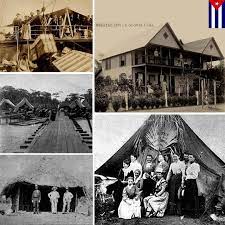
Pero la historia no fue tan bonita como parece. En realidad, muchos de estos colonos que habían comprado tierras allí habían sido víctimas de una mentira: habían comprado tierras en un pueblo vibrante que solo existía en los planos de la compañía ficticia de Nueva York ‘Cuba Land and Steamship Company’. Los que no pudieron regresar a Estados Unidos se mezclaron con otros que llegaron a la Isla por diferentes caminos.
AMERICANOS EN LA ISLA DE LOS PINOS…
En ella, para el año 1913 residían en distintos puntos de la isla más de 1.600 norteamericanos. Casi tantos como los pineros. En 1914, la ciudad nueva y reconstruida de La Gloria y el Valle de Cubitas, en general, alcanzan su apogeo. Sus habitantes eran miles de estadounidenses y muchos alemanes, polacos, ingleses, suecos, daneses, italianos y de otras nacionalidades. La ciudad de Gloria disponía de sala de audiencias, comisaría, puesto de guardia rural, ayuntamiento, puesto de correos y telégrafos, línea telefónica de Port Viaro a La Gloria, colegio, biblioteca, energía eléctrica, comercios, posadas, peluquerías. , Lecherías, panaderías, farmacias, herrerías, fotógrafos, artesanos, médicos, carpinteros y albañiles.
Había una fábrica de jabón, una fábrica de escobas y dos pintorescos hoteles de dos pisos con exuberantes jardines y ventanales, alfombras, finos cristales y porcelanas y cortinas de seda. Se construyó un camino pavimentado bajo la dirección del ingeniero Kelly. Comenzó en Puerto Viaro, atravesó la Avenida Central de La Gloria, y siguió hacia la Cordillera Cubitas, en busca de la ciudad de Camagüey. Puentes de hormigón y vigas de madera cruzaban los arroyos. El viejo Sr. Louis de Boston hizo zapatos brillantes para las damas y los jeans con los cientos de los últimos que trajo consigo.
A un costado de la ciudad se construyó un pequeño ingenio azucarero para la elaboración de azúcar y melaza. Una imprenta distribuía dos veces por semana un periódico, Los cubanoamericanos, así como libros y publicaciones de interés para la comunidad. El inglés Mr. Weake preparó cerveza y cerveza negra. Hubo servicios en dos iglesias: una metodista y otra episcopal. El padre Hildebrand de Palm City, una ciudad alemana a unas doce millas de La Gloria, pronunciaba una misa católica el primer domingo de cada mes. Había Odd Fellows y Rebekah Lodges. Las casas estaban construidas de caoba y cedro, bien formadas y espaciosas. Las calles estaban limpias y sombreadas por árboles de Poinciana. Una orquesta de doce músicos (cinco mujeres y siete hombres) amenizaba las fiestas con violines, violas, metales y tambores. Se cosecharon cítricos y hortalizas y se importaron mercancías de Nueva York a través del puerto de Nuevitas. Un carro de mulas con ruedas y rieles de madera de sabicu hacía el viaje desde la ciudad de La Gloria hasta Puerto Nuevo, mientras que el vapor La Gloria servía tanto como medio de transporte como de esparcimiento desde la costa hasta los cayos.
En 1925 la inmensa mayoría del territorio era propiedad de americanos, los que se dedicaban a explotar extensas plantaciones de cítricos y árboles frutales, que con el tiempo llegarían a ser el principal sustento económico de la isla.
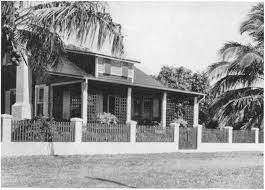
Una descendiente de Willian Stokes, quien la crió desde pequeña, Jeanny Martínez señala: “La iglesia metodista estaba por ahí, la iglesia episcopal por ahí”, explica mientras señala desde la terraza de su modesta casa de madera y hojalata. Como muchos cubanos de su generación, Jenny habla de su juventud prerrevolucionaria con una mezcla de romanticismo y nostalgia.
“Tengo que defender a los americanos porque mucha gente entonces pasaba hambre y les daban trabajo y comida en sus naranjales”.
Como es común en sus prácticas, los colonos trajeron consigo todas las comodidades y lujos del sistema de vida norteamericano, que reprodujeron, en la medida de lo posible, en Isla de Pinos para lo cual construyeron hoteles y jardines, iglesias y bancos, avenidas y malecones, y sus casas en las afueras de los pueblos.
Los colonos americanos tuvieron mucho éxito en el cultivo de los cítricos, que desarrollaron para obtener ganancias extraordinarias sobre otros alimentos, que ni siquiera se producían para satisfacer las necesidades del consumo local.
Algunos analistas políticos dicen que después de la Guerra Hispanoamericana-Cubana, los colonos habían comenzado a desembarcar masivamente en Isla de Pinos, para sentar las bases demográficas para eventualmente consumar la anexión del territorio a los Estados Unidos.
Pero al dictaminar la Corte Suprema de los Estados Unidos, en 1907, que la isla era territorio cubano y nunca había sido parte del país norteño, los ánimos de los colonos se estaban agotando, por lo que muchos vendieron sus tierras y regresaron a su país de origen. origen, por lo que fueron pasando tierras y negocios a manos cubanas o españolas.
En 1932 un fuerte huracán pasó por Camagüey y destruyó las plantaciones de cítricos y azúcar de La Gloria y muchas otras plantaciones de la isla. Con esto, también se llevó los sueños de los colonos. La mayoría vendió sus tierras y volvió a los Estados Unidos.
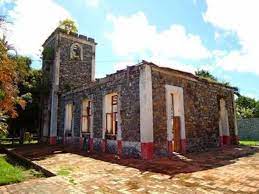
El impacto fue tan importante que a casi un siglo de distancia, la huella norteamericana en Isla de Pinos sigue existiendo.
HUELLAS NORTEAMERICANAS QUE HAN QUEDADO EN LA ISLA.
Una de ellas es que existen dos cementerios americanos, uno en Santa Bárbara y otro en Colombia, lo que nos muestra la cantidad y dispersión de los pobladores en el territorio insular. El de Columbia, en las inmediaciones de La Fe, se mantiene limpio y podado, como forma de preservar la memoria de unos 280 estadounidenses enterrados allí.
El primer poblador enterrado en el cementerio de los americanos se llamaba Freeman Cooper, un alemán que ingresó a Cuba desde Estados Unidos y murió el 30 de noviembre de 1907. Su hijo Frank, manejó la necrópolis hasta 1976 cuando regresó a su país. También está el Sr. Pierce, presidente de Isle of Pines Company, y el Sr. Mills, propietario de otra importante empresa.
Estos cementerios dan testimonio de la cantidad de estadounidenses que vivieron, trabajaron y murieron en esta pequeña isla, una vez refugio de piratas, luego colonia penal y más tarde fuente de productos agrícolas para vender en Cuba y Estados Unidos.
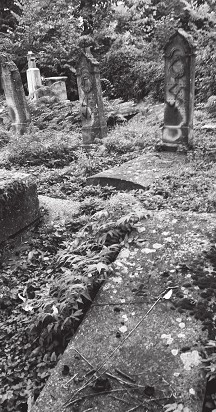
La lápida con el nombre de Estefania Koenig y otra con el de William Stokes -quien era un bebé cuando sus padres llegaron a Cuba, se casó y formó una familia en el pequeño pueblo de La Gloria City toda su vida, incluso después de que sus hijos emigraron y su negocio se rompió: fueron los últimos estadounidenses originales en morir en la isla, esto nos muestra la duración de la presencia estadounidense y lo que queda; los testigos mudos y las ruinas de sus negocios, escuelas, hoteles y viviendas, así como los restos de una mina de oro.
Un siglo después de aquel capítulo, aquellos pioneros de principios del siglo XX sólo quedan sus nombres en las tumbas del cementerio donde ese sueño norteamericano estuvo a punto de cumplir el deseo de sus propias ambiciones en una nueva tierra …
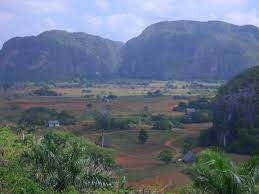
RECOMIENDENOS A SUS AMISTADES * PREFIERA A NUESTROS SPONSORS.

THE ISLAND OF PINES, CUBA, AND IN IT THE NORTH AMERICAN FOOTPRINTS OF A DREAM LOST FOREVER

Since its Spanish colonization in 1494, the Island of Pines, now named Isla de la Juventud, has always been considered an integral part of Cuban territory, as have all the islands, keys, and islets that surround Cuba, but when Spanish rule ended in 1898 with the US military occupation, questions arose regarding its future status and the United States, through the Platt Amendment, gives sovereignty to that country over it, relying on the utility that could be provided by its territory in the defense of the Panama Canal.
THE NORTH AMERICAN DREAM STARTS…
Towards those months of US intervention on the island, the US merchant SH Pearcy, based in Havana, acquired several thousand hectares of land on the island, which allowed him to establish the sale of lots to Spanish customers and founding in 1901 the Isle of Pines Company, and in partnership with other fellow investors, created several companies such as Santa Fe Land Company, Isle of Pines Land and Development Company, Almacigos Springs Land Company, Canadian Land and Fruit Company and others, with which they became owners of almost the whole island.
The propaganda referred to Isla de Pinos as a new and promising territory of the United States, which attracted a large mass of American settlers, mostly farmers and ranchers, who settled in the existing population centers, while at the same time they created new towns, such as Columbia, Port Jucaro, McKinley, San Pedro, Los Indios, Santa Bárbara, Los almácigos, San Francisco de las Piedras and the one that was named La Gloria, better known as ‘La Gloria City’.
On January 4, 1900, 200 men and women from the United States arrived in Cuba on a steamboat with the intention of creating a colony on the Caribbean island.
When they saw the coast of Nuevitas, it had not been two years since the end of the Spanish-American war, so they hoped that if they were followed by more compatriots, Cuba would end up being annexed by the United States.
According to the legend, after days making their way through the mangroves, the settlers were so happy to find a place where the mud did not reach their knees and that it was not full of mosquitoes that felt “glory!”. And that’s how ‘La Gloria City’ was born.
But the story was not as pretty as it seems. In reality, many of these settlers who had bought land there had been the victims of a lie: they had bought land in a vibrant town that only existed on the plans of the fictional New York company ‘Cuba Land and Steamship Company’. Those who could not return to the United States mixed with others who arrived on the Island in different ways.
AMERICANS ON THE ISLAND OF PINES…
In it, for the year 1913 resided in different points of the island more than 1,600 Americans. Almost as many as the pineros. In 1914, the new and reconstructed city of La Gloria and the Valley of Cubitas, in general, reached its peak. Its inhabitants were thousands of Americans and many Germans, Poles, English, Swedes, Danes, Italians, and other nationalities. The Gloria City had a courtroom, a police station, a rural guard post, a town hall, a post and telegraph station, a telephone line from Port Viaro to La Gloria, a school, a library, electric power, shops, inns, hairdressers, Dairies, bakeries, pharmacies, blacksmith shops, photographers, craftsmen, doctors, carpenters, and masons.

There was a soap factory, a broom factory, and two quaint two-story hotels with lush gardens and bay windows, rugs, fine glass and porcelain, and silk curtains. A paved driveway was built under the direction of Engineer Kelly. It began in Port Viaro, crossed the Central Avenue of La Gloria, and continued towards the Cordillera Cubitas, in search of the city of Camagüey. Concrete bridges and wooden beams crossed the streams. Old Mr. Louis of Boston made bright shoes for the ladies and the jeans with the hundreds of last brought with him.
On one side of the city, a small sugar mill was built for the manufacture of sugar and molasses. One printing house distributed a newspaper twice a week, The Cuban Americans, as well as books and publications of interest to the community. The English Mr. Weake prepared beer and stout. There were services in two churches: one Methodist and the other Episcopal. A Catholic mass was pronounced on the first Sunday of every month by Father Hildebrand of Palm City, a German city about twelve miles from La Gloria. There were Odd Fellows and Rebekah Lodges. The houses were built of mahogany and cedar, well-formed and spacious. The streets were clean and shaded by Poinciana trees. An orchestra of twelve musicians (five women and seven men) provided entertainment at parties with violins, violas, brass, and drums. Citrus and vegetables were harvested and goods from New York were imported through the port of Nuevitas. A trolley of mules with wheels and sabicu wooden rails made the trip from La Gloria City to New Port, while the steamer La Gloria served both as a means of transport and leisure from the coast to the cays.
In 1925 the immense majority of the territory was the property of Americans, those that were dedicated to exploding extensive plantations of citrus fruit and fruit trees, that with time would get to be the main economic support of the island.
A descendant of Willian Stokes, who raised her from small Jeanny Martinez points out “The Methodist church was out there, the Episcopal church out there,” she explains as she points from the veranda of her modest wooden and tin house. Like many Cubans of her generation, Jenny speaks of her prerevolutionary youth with a mixture of romanticism and nostalgia.
“I have to defend the Americans because a lot of people were hungry back then and they gave them work and food in their orange groves”.
As is common in their practices, the settlers brought with them all the comforts and luxuries of the North American system of life, which they reproduced, to the extent possible, on the Isle of Pines for what they built hotels and gardens, churches, and banks, avenues and piers, and their houses on the outskirts of the towns.
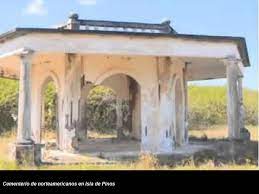
The American colonists were very successful in the cultivation of citrus, which they developed to obtain extraordinary profits over other food items, which were not even produced to meet the needs of local consumption.
Some political analysts say that after the Spanish-American-Cuban War, the colonists had begun to disembark massively in the Isle of Pines, to lay down the demographic bases to eventually consummate the annexation of the territory to the United States.
But when ruling the Supreme Court of the United States, in 1907, that the island was Cuban territory and had never been part of the northern country, the spirits of the settlers were running out, so many sold their land and returned to their country of origin, so they were passing land and business to Cuban or Spanish hands.
In 1932 a strong hurricane passed through Camagüey and destroyed the citrus and sugar plantations in La Gloria and many other plantations on the island. With this, he also took the dreams of the settlers. The majority sold their land and returned to the US.
The impact was so important that almost a century away, the North American footprint on the Isle of Pines continues to exist.
NORTH AMERICAN FOOTPRINTS THAT HAVE REMAINED ON THE ISLAND.
One of them is that there are two American cemeteries, one in Santa Bárbara and the other in Columbia, which shows us the amount and dispersion of the settlers in the insular territory. The one in Columbia, in the vicinity of La Fe, is kept clean and pruned, as a way to preserve the memory of some 280 Americans buried there.
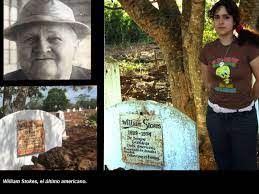
The first settler buried in the cemetery of the Americans was named Freeman Cooper, a German who entered Cuba from the United States and died on November 30, 1907. His son Frank, managed the necropolis until 1976 when he returned to his country. There is also Mr. Pierce, president of the Isle of Pines Company, and Mr. Mills, who owns another important company.
These cemeteries bear witness to the number of Americans who lived, worked, and died on this small island, once a haven for pirates, then a penal colony, and later a source of agricultural products to sell in Cuba and the United States.
The tombstone with the name of Estefania Koenig and another with that of William Stokes – who was a baby when his parents arrived in Cuba, married and raised a family in the small town of La Gloria City all his life, even after his children emigrated and their business broke – they were the last original Americans to die on the island, this shows us the length of the American presence and what remains; the mute witnesses and the ruins of their businesses, schools, hotels, and homes, as well as the remains of a gold mine.
A century after that chapter, those pioneers of the early twentieth century only their names remain in the tombs in the cemetery that one day was about to fulfill a dream in a new land…
Agencias/ MemoriasCubanas/ Carlos RodríguezB. /BBCMundo/ Will Grant/ Internet Photos/ Arnoldo Varona/ www.TheCubanHistory.com
THE CUBAN HISTORY, HOLLYWOOD.

RECOMIENDENOS A SUS AMISTADES * PREFIERA A NUESTROS SPONSORS.








